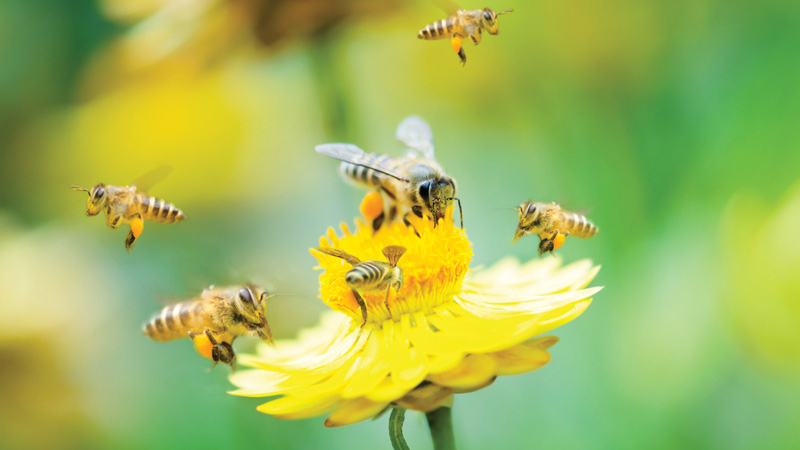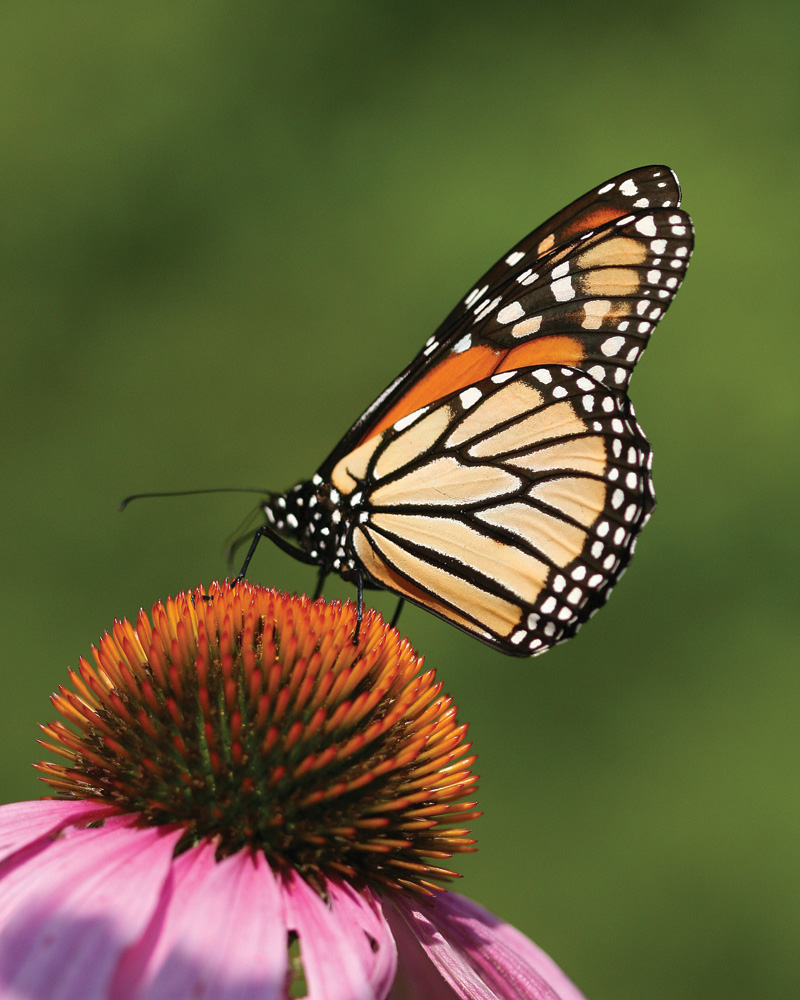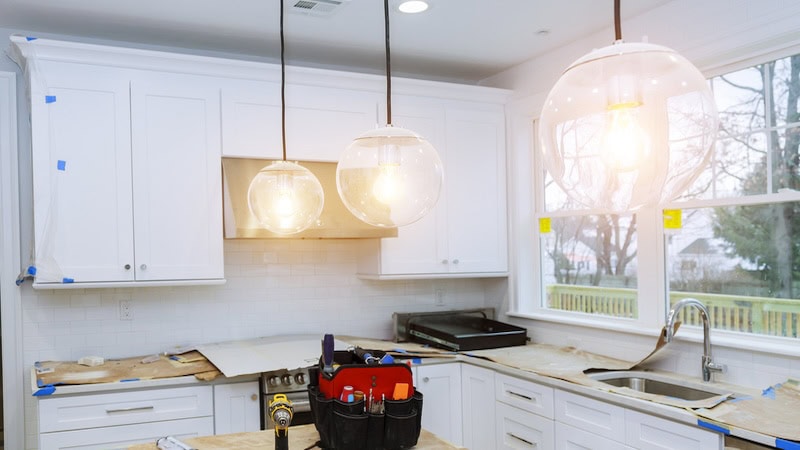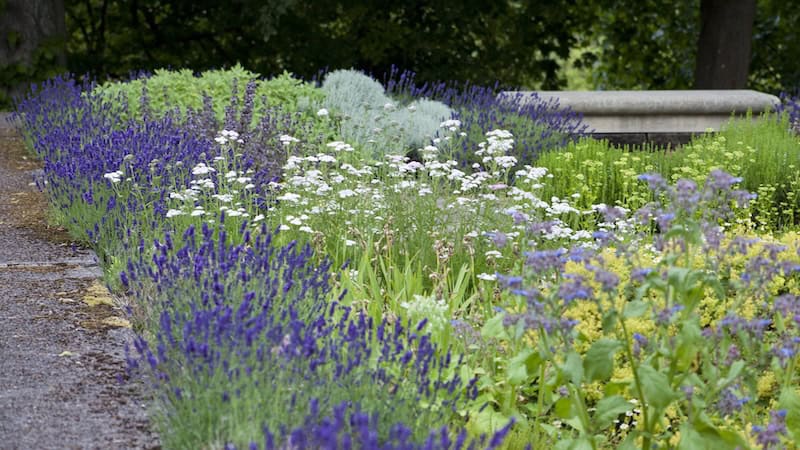Attracting Pollinators to Your Yard
Play your part to pollinate a healthy world 'bee-cause' attracting bees, butterflies and other pollinators beautifies your yard, too

Bees may be tiny, but they face some big challenges today, including loss of habitat and the perils of pesticides. Last year, the bumblebee became the first wild bee species in the United States to be declared endangered, and domesticated honeybee populations have been declining for years.
The disappearance of these tiny creatures would affect us all, because bees pollinate about one-third of the fruits and vegetables that we consume in the U.S., contributing nearly $20 billion to our domestic food supply, as well as the blooms that lend beauty to our lives.
If you think honeybees do all the work, think again! There are approximately 4,000 native bee species in North America, and the honeybee is not one of them. That’s right! Honeybees are not native bees. In fact, researchers believe they were first brought to this continent by way of Virginia in 1622 by European settlers.
“People don’t realize that most of our agricultural crops are pollinated by native bees, not honeybees,” said Grace Chapman Elton, former director of horticulture at Lewis Ginter Botanical Garden. Butterflies, hummingbirds, bats and even beetles also help pollinate plants.
Honeybees are certainly good pollinators and produce wonderful products like honey, beeswax and royal jelly. They are also a good indicator of how environmental stresses are impacting all bees, including native bees, since they’re easier to monitor.
But while honeybees live in domesticated hives, most of our native bees are gentle ground dwellers, and, according to Elton, they live alongside us every day, even though we rarely notice their presence.
A Beautiful and Efficient Pollinator Garden
Fortunately, there are some simple things you can do right in your own backyard to help save bees while also attracting other interesting and beautiful pollinators.
All bees require similar sources of food, water and cover, and all are affected adversely by loss of habitat and harmful substances like pesticides, according to Elton.
And that’s where you can help, while at the same time beautifying your backyard or garden. Luckily, “All those concepts that are good for pollinators are good for your garden aesthetically as well,” she said.
One of the most important things you can do to help pollinators is to include at least three plants in your garden that bloom in each season (even winter, since bees come out on warmer winter days).
“Never have a period where there’s nothing blooming in your yard,” she said. That’s because when bees find a food source, they will keep coming back to it over and over again, and if they return and there’s no food, they can starve.
“A wide variety of plants of different colors, shapes and sizes will not only help to bring bees and butterflies, but all those other pollinators  as well … so you’re really supporting an entire ecosystem.”
as well … so you’re really supporting an entire ecosystem.”
Butterflies tend to go for different flowers based on scent and color, often preferring bright red or purple flowers. They have very long tongues, almost the length of their bodies, and can get into very deep blooms to extract nectar. Bees tend to favor white or light-purple flowers, and, as with all pollinators, go for the blooms that are the best fit based on the lengths of theirtongues and shapes of their bodies, which vary from species to species.
“Think about a human diet when planting,” said Elton. “It’s a healthier plate if it has different colors.”
Experts recommend native plants in your garden for pollinators for a couple of reasons. First, native plants are pollinated by and are good pollen and nectar sources for native bees. Second, they have adapted to native soils and temperatures.
“It’s a low-stress-management kind of planting that will save gardeners trouble,” Elton said, since native plants don’t require as much care, have as many pest problems or require extra fertilizers.
When planting for pollinators, it’s also important to plant in clumps that are 3 feet in diameter, such as one shrub or a clump of three to four of the same perennial.
Plan for layers in your garden so pollinators can seek cover from predators. For example, planting shrubs or broadleaf conifers can provide cover for a bee flying down from a tree to drink nectar from a low-growing flower.
You should also provide a water source, such as a birdbath, and limit the use of pesticides.
To support native bees that nest in the ground, leave patches of bare soil in areas of your yard that are not well traveled by humans, such as a corner near a privacy fence.
Like many good deeds, maintaining a yard that’s healthy for pollinators provides benefits for the giver, too.
Resources:
- Demonstration hives: Bob Stapleton and Keith Tignor Apiary at Lewis Ginter Botanical Garden and the Science Museum of Virginia.
- Information on protecting pollinators such as bees and butterflies: Visit the Xerces Society for Invertebrate Conservation at Xerces.org.
- Local beekeeping clubs:


